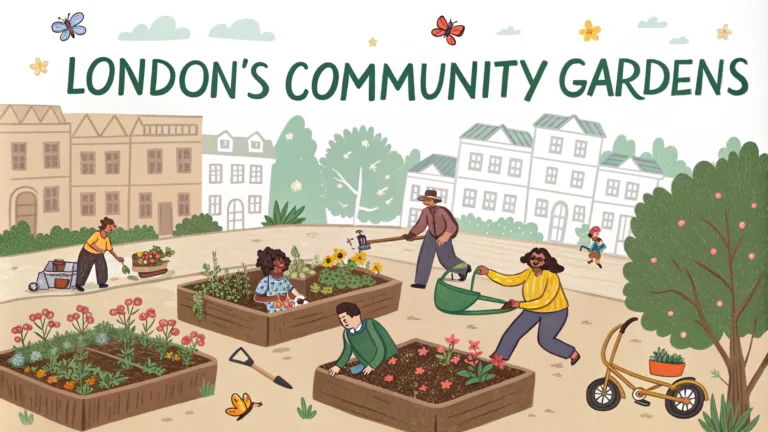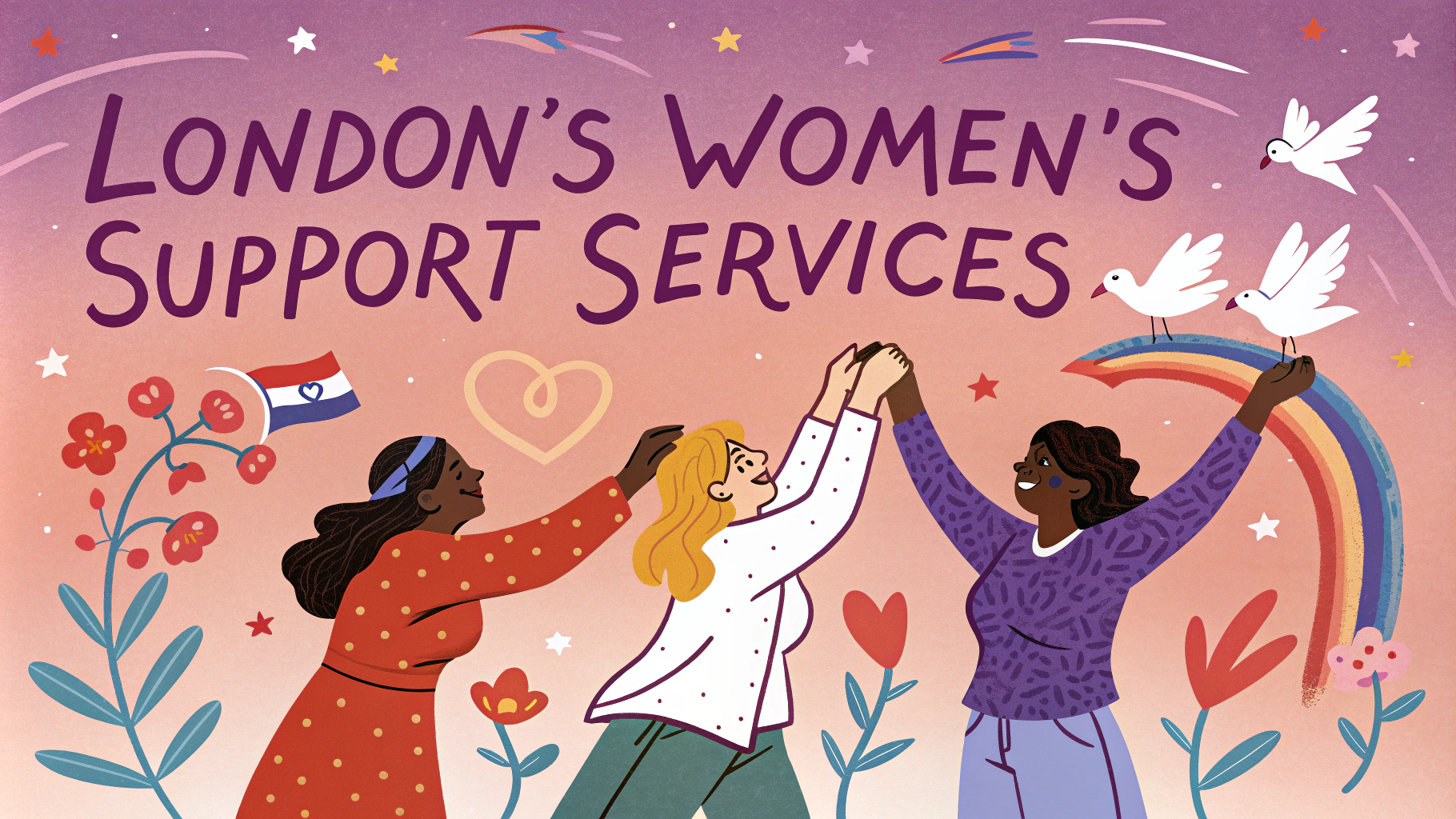Community gardens in London provide urban residents with valuable growing spaces, social connections, and access to fresh produce right in their neighborhoods.
These shared green spaces have become increasingly popular as more Londoners seek sustainable living options and ways to connect with nature within the city limits.
Whether you’re moving to London or relocating within the city, understanding how to access and participate in community gardens can enhance your living experience.
Finding Community Gardens Near You
The Capital Growth network maintains a searchable map of over 2,500 community growing spaces across London.
- Royal Borough of Kensington and Chelsea Gardens – Call 020 7341 5367
- Hackney Community Gardens – Email [email protected]
- Tower Hamlets Gardens – Visit their official page
Joining a Community Garden
Most gardens require membership applications and annual fees ranging from £20-50.
- Contact the garden coordinator directly
- Attend an orientation session
- Sign membership agreements
- Complete required volunteer hours
Starting Your Own Community Garden
The Royal Horticultural Society offers support for starting new community gardens through their Community Outreach Program.
Key Steps:
- Secure land permission
- Gather community support
- Apply for funding
- Set up garden infrastructure
Community Garden Benefits When Moving
| Benefit | Description |
|---|---|
| Social Integration | Meet neighbors and build local connections |
| Cost Savings | Grow your own produce |
| Environmental Impact | Reduce food miles and carbon footprint |
Garden Access During Moves
When relocating within London, many gardens allow membership transfers to other locations within their network.
Moving Checklist:
- Notify garden coordinators of moving dates
- Transfer or close existing memberships
- Research gardens near new location
- Submit new applications early
Growing Forward in Your New Community
Connect with the London Food Link network for ongoing support and resources in community gardening.
For specific garden locations and current availability, contact the Capital Growth helpline at 020 7065 0889.
Seasonal Growing Guidelines
London’s climate offers varied growing opportunities throughout the year. Understanding the seasonal calendar helps new gardeners maximize their plots.
Key Growing Seasons:
- Spring (March-May): Plant leafy greens, peas, early potatoes
- Summer (June-August): Tomatoes, beans, cucumbers
- Autumn (September-November): Root vegetables, winter squash
- Winter (December-February): Winter greens, planning and preparation
Community Garden Events and Activities
Most London community gardens host regular events that help new residents integrate into the local community.
- Monthly harvest sharing
- Gardening workshops
- Seasonal celebrations
- Community composting days
Storage and Tools
When moving to a new garden, consider the following equipment needs:
| Essential Tools | Recommended Storage |
|---|---|
| Hand trowel, fork, pruners | Personal locker or shared shed |
| Watering can, gloves | Weather-proof container |
Cultivating Community Through Urban Gardens
Community gardens offer more than just growing space – they provide a foundation for sustainable urban living and lasting community connections. Whether you’re new to London or changing neighborhoods, these shared spaces can become an integral part of your local experience.
Contact Capital Growth or your local garden coordinator to begin your community gardening journey. Remember to register early, as many gardens maintain waiting lists for new members.
FAQs
- How can I join a community garden in London?
You can join by contacting your local borough council, visiting the Capital Growth network website, or reaching out directly to community gardens in your area. Most gardens require membership registration and may have waiting lists. - What are the typical costs associated with maintaining a plot in a London community garden?
Annual fees typically range from £20-£100 depending on plot size and location. Additional costs may include membership fees, tool sharing contributions, and individual growing supplies. - Which London boroughs have the most community gardens?
Hackney, Islington, and Tower Hamlets have the highest concentration of community gardens, followed by Lambeth and Lewisham. - Do I need gardening experience to participate in a London community garden?
No, most community gardens welcome beginners and offer workshops, mentoring, and support from experienced gardeners to help you learn. - What can I grow in a London community garden?
You can grow vegetables, herbs, fruits, and flowers depending on the season. Popular crops include tomatoes, potatoes, beans, lettuce, and seasonal British vegetables. - Are there rules about organic gardening in London’s community gardens?
Many London community gardens require organic growing methods, prohibiting the use of synthetic pesticides and fertilizers. Check specific garden policies as requirements vary. - How much time do I need to commit to a community garden plot?
Most gardens expect members to tend their plots at least 2-3 hours per week during growing season and participate in occasional communal maintenance days. - Can I transfer my community garden membership when moving within London?
Generally no, each community garden operates independently. You’ll need to apply for membership at a garden in your new area, though some boroughs may help facilitate transfers. - Are community gardens accessible year-round in London?
Most gardens are accessible throughout the year, though opening hours may be limited during winter months. Some gardens may close completely during severe weather conditions. - What happens to my plot if I’m away for an extended period?
You must notify garden coordinators of extended absences. Many gardens allow temporary caretakers or plot-sharing arrangements, but neglected plots may be reassigned after a specified period.







